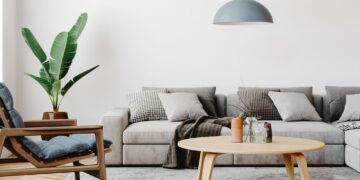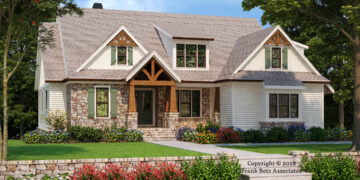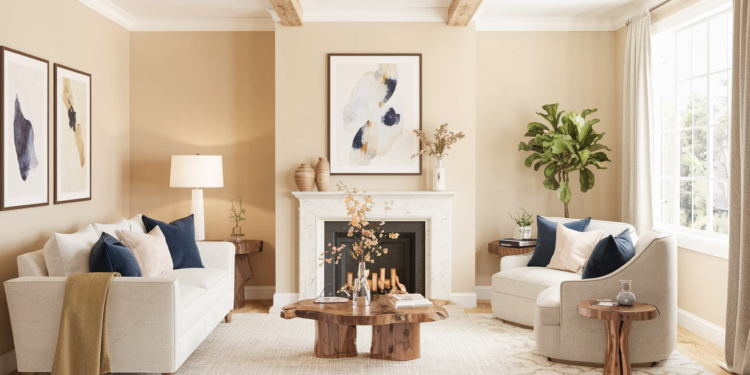Sherwin Williams Kilim Beige is a warm, neutral shade with a hint of yellow and a soft, earthy undertone.
Kilim Beige pairs effortlessly with various accent colors, ranging from crisp whites to darker blues and greens.
This color creates a welcoming, soothing atmosphere if you’re using it in the living room, bedroom, or even on exterior surfaces.
In this guide, we’ll explore the best complementary colors and how to use Kilim Beige in your home to achieve the perfect look.
Understanding Kilim Beige’s Undertone
Kilim Beige has a yellowish base with a hint of peach, thanks to its spectral data.
It sits on the border of the Yellow-Red hue, meaning it carries a warm, subtle peach undertone.
While this peach effect can occasionally come through depending on the light, it’s typically soft and doesn’t overpower the space.
This color is ideal for those looking for a warm neutral with more depth than typical beiges or tans.
Kilim Beige adapts beautifully to both if you’re working with south-facing rooms that get abundant light or north-facing spaces that may feel cooler.
It offers a sense of comfort and calm that many other beige tones simply can’t match.
Light Reflectance Value (LRV) of Kilim Beige
The Light Reflectance Value (LRV) of Kilim Beige is 57.
This LRV rating places it in the middle of the spectrum, reflecting moderate light.
As a result, Kilim Beige can make spaces feel cozy without being too dark.
- Kilim Beige will appear warmer and more saturated in a room with ample sunlight, bringing a soft, comforting feel to the space.
- The color remains balanced and subtle in dimly lit rooms, preventing the room from feeling too heavy or gloomy.
If you’re concerned about the impact of lighting on how Kilim Beige looks, it’s essential to test paint samples on all walls of your room.
Natural light shifts throughout the day, and different light sources—whether cool or warm—will influence how the color is perceived.
Complementary Colors for Kilim Beige

One of Kilim Beige’s most notable qualities is how well it pairs with other colors.
It’s adaptable and works seamlessly with a variety of tones, from subtle neutrals to richer, deeper hues.
Below are the best color combinations to complement Kilim Beige in your interiors.
1. Soft Beiges and Creams
Pairing Kilim Beige with other shades of beige or cream creates a unified and tranquil look.
The subtle shifts in warmth between these tones will ensure that your space feels grounded and welcoming.
Complementary Colors: Natural Linen (SW 9109), Accessible Beige (SW 7036), and Alabaster (SW 7008).
2. Gray and Greige Shades
Soft grays, taupes, and greiges provide a modern contrast without overpowering Kilim Beige’s warmth.
These colors help maintain the soft, neutral appeal while adding a sophisticated touch to your space.
Complementary Colors: Repose Gray (SW 7015), Dorian Gray (SW 7018), and Mindful Gray (SW 7016).
3. Darker Blues
Pairing Kilim Beige with deeper blues or blue-green tones creates a dynamic contrast.
Blue is the opposite of yellow on the color wheel, making it a complementary hue.
When you combine the two, it adds both balance and interest to a room, making it feel vibrant but serene.
Complementary Colors: Aleutian (SW 6241), Rainwashed (SW 6211), and Sea Salt (SW 6204).
4. Rich Wood Tones
Wood elements, from oak to walnut, can enhance Kilim Beige’s natural warmth.
Wood furniture or floors will add texture and dimension to your space, helping the color feel connected to the environment.
Complementary Wood Tones: Oak, Stain color classic Cherry(SW 3110), Walnut stain(MW439).
5. Pops of Bold Colors
To add energy to a neutral room, consider using Kilim Beige as a backdrop and incorporating bolder colors as accents.
Adds contrast and energy to a neutral room, keeping the space lively without overpowering the calm warmth of the beige.
Complementary Bold Colors: Osage Orange(SW6890), Roy croft copper Red(SW2839), Green Vibes(SW6928).
What Makes Kilim Beige Stand Out?
Kilim Beige is not your typical neutral. It falls into the beige family but stands out because of its rich undertones.
This color has a distinct warmth derived from a combination of yellow and a subtle peach-like hue, especially visible in certain lighting conditions.
This makes it an excellent choice for adding warmth without feeling overly heavy.
Using Kilim Beige in Your Space

Kilim Beige’s warmth and adaptability make it an excellent choice for various spaces. Here’s how you can use it in different areas of your home:
Living Room
In the living room, Kilim Beige works as an excellent neutral backdrop.
Pair it with pops of blue, soft grays, or wooden accents for a balanced look.
It works well with various furniture styles, from traditional to contemporary, and enhances a space’s inviting atmosphere.
Bedroom
For a restful bedroom, Kilim Beige creates a soothing environment.
Pair it with soft blues, muted grays, or creamy whites for a serene, restful look.
Add natural textures like wood or linen to maintain warmth while relaxing the space.
Kitchen
Kilim Beige can help create a bright, neutral environment in the kitchen.
The color feels modern and fresh when paired with white cabinetry or stainless steel accents.
For a warmer look, incorporate wood finishes for a more natural, rustic vibe.
Bathroom
Kilim Beige is also a great choice for bathrooms.
Either you go for a modern, spa-like feel with cool gray accents or a more rustic approach with rich wood tones, Kilim Beige ensures the space remains cozy and inviting.
Kilim Beige for Exterior Use
If you’re considering Kilim Beige for your home’s exterior, it can work wonders.
Due to its moderate LRV of 57, it reflects enough light to keep the exterior bright while still maintaining the warmth that makes it feel inviting.
It pairs beautifully with brick or stone with similar peachy tones, creating a cohesive, warm exterior look.
Before committing, however, it’s essential to test the color in the specific outdoor environment.
Natural light and surrounding elements can affect how Kilim Beige looks on the exterior.
What are the Alternatives to Kilim Beige?
While Kilim Beige has a unique tone, several other colors share a warm, neutral vibe.
Here are some alternative shades to consider if you’re looking for something similar but with a slightly different look:
These alternatives may not match Kilim Beige exactly, but they offer a similar warm, inviting feel with slight variations.
Final Thoughts
Kilim Beige is a versatile base color that can be used in various ways to create calming and dynamic spaces.
You can bring warmth and life into your home while maintaining a peaceful atmosphere by pairing it with complementary wood tones, rich greens, or deep blues.
Whether you choose bold pops of color or opt for a more subtle approach, Kilim Beige can adapt to your personal style and preferences.
It remains relevant in various design schemes, making it an excellent choice for anyone looking to add depth and character to their living space.




























